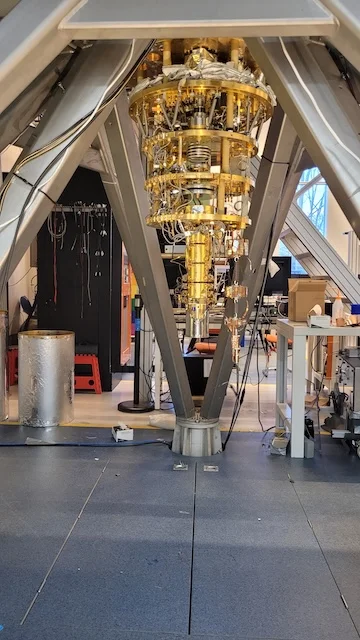The first direct search for ultralight dark matter using a magnetically levitated particle has been conducted, according to new research led by Christopher Tunnell, a physicist at Rice University, and Dorian Amaral, a postdoctoral researcher and lead analyst. The study was published in the American Physical Society journal on 24th June, 2025.

The experiment is designed to probe areas of the theoretical landscape that current detectors have not explored. Image Credit: Rice University
Though invisible, dark matter is thought to make up most of the universe's mass. According to one theory, lightweight dark matter has continuous wave behavior, which may result in rhythmic forces that can only be detected with extremely sensitive quantum equipment.
Our approach brings dark matter detection into a new realm. By suspending a tiny magnet in a frictionless environment, we are giving it the freedom to move if something nudges it.
Christopher Tunnell, Physicist, Rice University
The team worked with Leiden University scientists to hold a small neodymium magnet within a superconducting enclosure that had been cooled to almost zero degrees. The apparatus was designed to detect faint oscillations believed to result from dark matter waves moving through the Earth.
Our approach brings dark matter detection into a new realm. By suspending a tiny magnet in a frictionless environment, we’re giving it the freedom to move if something nudges it.
Christopher Tunnell, Associate Professor, Physics and Astronomy, Rice University
A New Window into Dark Matter
Using sensors that could detect movements smaller than the diameter of a hydrogen atom, the researchers kept an astonishingly accurate eye on the levitated magnet. They failed to detect the expected signal in spite of this sensitivity. Still, the null result allowed scientists to rule out a specific type of interaction between dark matter and ordinary matter.
Using a theoretical model known as B−L, the researchers focused on detecting forces from dark matter interactions that depend on baryon and lepton numbers, conserved quantum properties that remain unchanged during particle interactions.
They developed a novel dark matter technology and set new limitations on the intensity of these interactions by focusing their search on a small frequency range at about 26.7 Hz.
Tunnell added, “Every time we do not find dark matter, we refine the map. It is like searching for a lost key in your house when you do not find it in one place, you know to look elsewhere.”
Path to Polonaise
Building on these findings, the research team proposed Polonaise, a next-generation experiment aimed at improving sensitivity and expanding the search for dark matter. This new setup will incorporate heavy magnets, enhanced levitation stability, and a broader frequency range.
The goal of the experiment is to find ultra-weak forces in the least disturbed surroundings feasible by probing parts of the theoretical landscape that have not yet been investigated by existing detectors.
“Our future setup would not just listen more closely, it will be tuned to hear things we have never even tried listening for,” Tunnell stated.
Amaral emphasized the wider ramifications of this experimental study that is now feasible. Last year, Amaral collaborated with Mustafa Amin, an associate professor of physics and astronomy, to build the theoretical foundations of this measurement.
We are not just testing a theory; we are laying the groundwork for an entire class of measurements. Magnetic levitation gives us a fundamentally new tool to ask the universe big questions.
Dorian Amaral, Study First Author and Postdoctoral Researcher, Rice University
By reaching force sensitivity similar to the weight of a single virus, the levitation platform offers up new possibilities for sensing weak, long-range forces. The National Science Foundation financed the study team, which included collaborators Dennis Uitenbroek and Tjerk Oosterkamp from Leiden University.
Journal Reference:
Amaral, D. W. P., et al. (2025) First Search for Ultralight Dark Matter Using a Magnetically Levitated Particle. Physical Review Letters. doi.org/10.1103/physrevlett.134.251001.